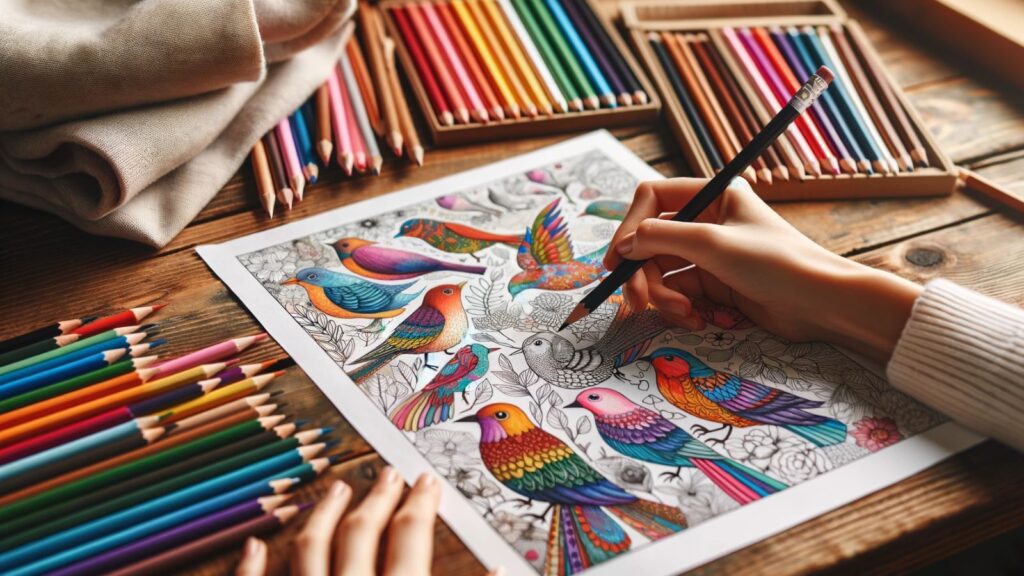Coloring isn’t just a childhood pastime; it’s an art form that adults worldwide embrace for its therapeutic benefits and the sheer joy of creating something beautiful. Whether you’re a seasoned artist or someone looking to unwind with a coloring book, mastering the art of coloring can transform a simple page into a masterpiece. Here are expert tips to elevate your coloring skills and make each page a professional-looking piece of art.

Understanding Color Theory
Before diving into your coloring book, having a basic understanding of color theory can significantly enhance your finished piece. Color theory helps you choose colors that complement each other and create a harmonious look. Here are a few key concepts:
- Complementary Colors: Colors opposite each other on the color wheel, such as blue and orange, can make each other stand out.
- Analogous Colors: Colors next to each other on the color wheel, like blue, blue-green, and green, create a serene and comfortable design.
- Triadic Colors: Colors evenly spaced around the color wheel offer a vibrant and dynamic look without overwhelming the viewer.
Choosing Your Tools
The market is flooded with coloring tools, from pencils to markers to watercolors. Each medium has its benefits and challenges:
- Colored Pencils: Great for detailed work and easy to control, pencils allow for blending and shading. Opt for high-quality pencils for richer pigments and smoother application.
- Markers: Markers provide vibrant colors and a smooth finish. They’re perfect for areas that require uniform color application. However, beware of bleeding through the pages.
- Watercolors: For a softer, translucent look, watercolors are an excellent choice. They can be tricky to master but offer a unique blend of colors.
Techniques for Shading and Blending
Shading and blending are crucial for adding depth and dimension to your artwork. Here are some techniques to try:
- Layering: Start with light pressure and build up layers of color to achieve the desired intensity.
- Burnishing: Use a white pencil or a colorless blender over colored sections to blend colors smoothly together.
- Gradient Effect: Create a smooth transition between colors by gradually decreasing the pressure as you move towards the next color.
Attention to Detail
Focusing on the details can elevate your coloring page from a simple activity to an intricate piece of art. Use fine-tipped pens or pencils to add small details or textures that can make your image pop. Paying attention to light sources and adding highlights and shadows accordingly can also add realism to your coloring.
Experiment with Backgrounds
Don’t neglect the background — it can completely change the mood of your piece. Consider using a single color to make the main subject stand out, or create a detailed background to add context and depth. Experiment with different techniques, like gradients or patterns, to see what complements your focal point best.
Practice Mindfulness and Patience
One of the greatest benefits of coloring is its ability to reduce stress and anxiety. Approach each coloring session with mindfulness, focusing on the process rather than just the outcome. Be patient with yourself as you try new techniques, and remember that practice is key to improvement.
Stay Inspired
Look for inspiration everywhere — nature, art, online galleries, or social media platforms like Instagram and Pinterest. Don’t be afraid to experiment with different styles, themes, and color schemes. Keeping a scrapbook or a Pinterest board of ideas can help spark creativity when you’re feeling stuck.
Protect Your Artwork
Once you’ve completed your masterpiece, take steps to preserve it. Use a fixative spray to prevent smudging or fading, especially if you’re using graphite or pastels. Consider displaying your work in a frame or an album to keep it safe and share it with others.
Coloring like a pro involves more than just staying within the lines; it’s about understanding color, mastering techniques, and expressing creativity.
Whether you’re coloring for relaxation or to create something beautiful, these tips can help you enhance your skills and make the most out of your coloring experience. Remember, the key to professional-looking results is patience, practice, and a willingness to experiment. So grab your coloring book and tools, and embark on a creative journey that relaxes and inspires!
